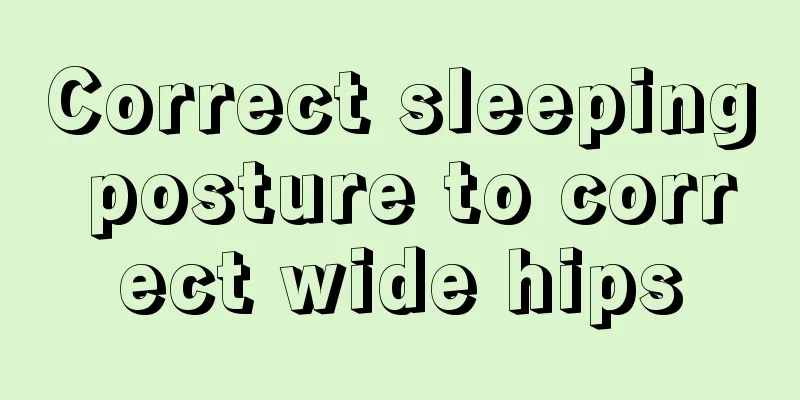Learn these 6 tricks and stay away from bronchitis, cough and phlegm

|
The elderly and children have poor physical constitution and low immunity, and are easily attacked by viruses. They are infected and then develop bronchitis with a long course of disease. As the disease progresses, it will spread from the lungs to the spleen, thus endangering their lives. To treat bronchitis, as long as you learn scientific methods such as inhalation, walking, picking out phlegm, and breathing, the disease will stay away from the elderly and restore the elderly and children to a healthy physique. 1. Steam inhalation method: During an attack of chronic bronchitis, one may feel uncomfortable coughing up phlegm and feel chest tightness and air blockage. This is because the phlegm is too thick and sticky, attaching to the bronchial wall, and is difficult to expel by coughing. At this time, you can use a deep barrel cup with a diameter of 10-15 cm to fill half a cup of boiling water, put your mouth and nose into the cup, and inhale the steam hard. Wait until the water cools down a little and then replace it with boiling water. Repeat 2-3 times and you will be able to cough up the phlegm smoothly. 2. Walking and turning method: Patients who have been bedridden for a long time have more severe cough and asthma symptoms and find it difficult to move. Therefore, during the milder afternoons, patients who are able to walk a little should be allowed to take a walk outdoors; those who are afraid of the cold should also stay indoors. Even if someone is truly unable to get up, their family members should frequently turn them over and tap their backs, because the changes in body position and lung vibrations caused by these activities are beneficial to blood and fluid circulation, and are more conducive to the discharge of phlegm. 3. Emergency sputum extraction method: Elderly people with severe chronic bronchitis and emphysema are likely to form large amounts of lumpy sputum due to severe infection, excessive tracheal mucus, inflammatory exudate white blood cells, and desquamated epithelial cells. When the patient has phlegm obstruction, family members can use the handle of a spoon to press the tongue, extend a gauze-wrapped finger into the throat, and pick out the blocked phlegm, thus achieving the purpose of first aid. 4. Take a deep breath and cough effectively: Suitable for patients who are conscious and able to cough. Take a comfortable position, take 5 to 6 deep breaths first, then keep your mouth open at the end of the deep inhalation, cough several times continuously, cough the phlegm to the vicinity of the throat, and then cough hard to expel the phlegm; or the patient can sit with both feet on the ground, hold a pillow with both hands to support the abdomen (to promote the rise of the diaphragm), lean forward when coughing, flex the head and neck, and open the mouth to cough to expel the phlegm. It helps to discharge secretions from the distal airway and keep the airway open. 5. Chest percussion and chest wall concussion: It is suitable for those who are weak due to long-term illness, bedridden for a long time, and unable to expectorate. The patient lies on his side, and the nurse bends her knuckles slightly, cups her hands, and gently taps the chest wall from the bottom of the lung from the outside to the inside and from the bottom to the top to vibrate the airway. While tapping, the patient is encouraged to cough to facilitate the excretion of phlegm. It is contraindicated for patients with undrained pneumothorax, rib fractures, a history of pathological fractures, hemoptysis, hypotension, pulmonary edema, etc. 6. Postural drainage: Postural drainage uses gravity to expel secretions from the lungs and bronchi out of the body, also known as gravity drainage. It is suitable for patients with emphysema, bronchiectasis, etc. who have a large amount of sputum and poor discharge. It is contraindicated for patients with respiratory insufficiency, obvious dyspnea and cyanosis, a history of severe hemoptysis in the past 1 to 2 weeks, severe cardiovascular disease or the elderly and weak who cannot tolerate it. |
<<: Do you know the importance of indoor environment to human body?
>>: How to improve indoor air quality?
Recommend
Is acquired gastric cancer hereditary?
Gastric cancer genes are prone to forming tumors,...
How to clean stains on clothes
Clothes will always get some stains when we wear ...
One of the beauty contact lenses is particularly sharp
Everyone's sensory sensitivity is different. ...
Should I get porcelain teeth or dental implants after tooth extraction
Having problems with your teeth is a very painful...
What is the reason for being easily irritable
In life, we will find that some people have very ...
How is nasopharyngeal carcinoma divided into stages one, two and three?
Stages 1 and 2 are early stages, and stages 3 and...
Exercise is very important after colon cancer surgery
As the saying goes, "Life lies in exercise.&...
What are the folk remedies for lung cancer? Five folk remedies for treating lung cancer
[Second folk prescription for lung cancer] Cortex...
What are the dietary precautions for small cell lung cancer
What are the dietary precautions for small cell l...
How long does it take for scabs to form after semi-permanent eyebrow tattoo
When a wound occurs on the human skin, scabs will...
How to relieve muscle soreness after exercise
Exercise is an important guarantee for human heal...
Are your ears buzzing and you can’t hear anything?
If you hear a buzzing sound in your ears and cann...
Can I eat chicken if I have chickenpox
We all know that chickenpox is a disease that req...
Does television have any effect on newborns?
Many people will find that newborn babies have un...
How is radiation therapy for brain cancer performed?
In recent years, brain cancer has gradually risen...









